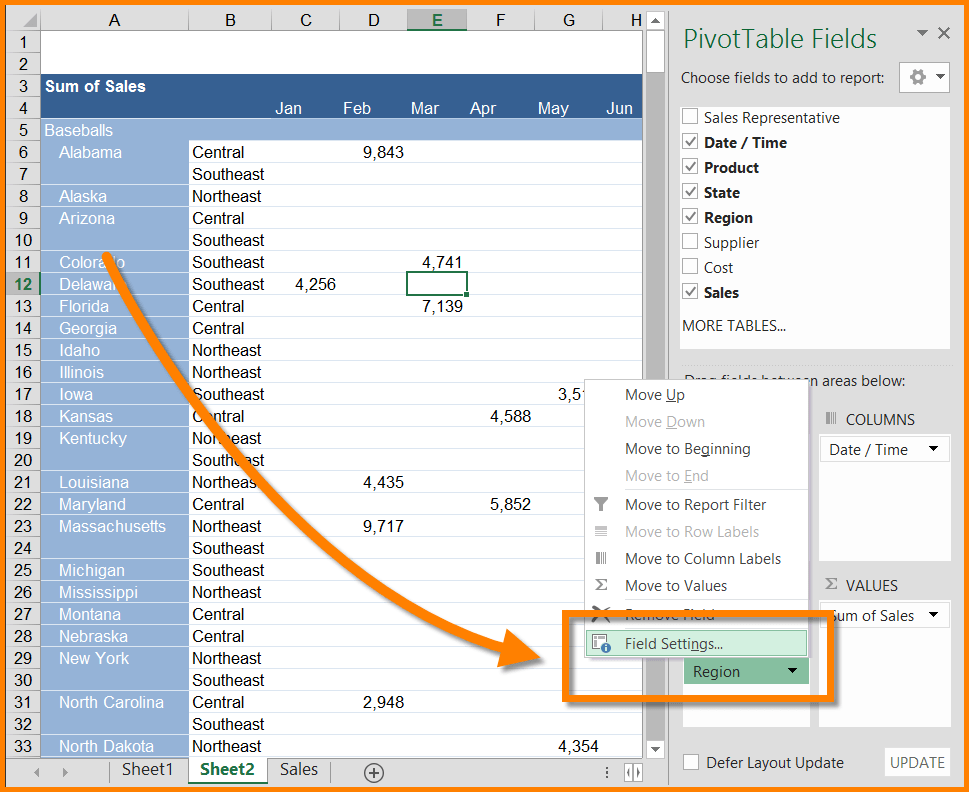

PIVOTING TABLES EXCEL UPDATE
If you update the original data, or add new records, they will automatically appear when you refresh the new, unpivotted data set. NOTE: The unpivotted data is connected to the original data. You can use the new data set to create your pivot table.Then, click the Close and Load button, to return the data to a new Excel worksheet.The unpivotted data will appear in the Query Editor, with the heading names in an Attribute column, and the amounts in a Value column.Right-click on one of the headings, and click Unpivot Columns.(Tip: Click on the first month column heading, then Shift+Click on the last month heading.) In this example, all the month columns are selected. In the Query Editor, select all the columns that you want to group into one value field.In the Get & Transform section, click the From Table command.(Or select a cell in a list, and it will be changed to a named Excel table) To use this technique with Get & Transform: Then, the pivot table can summarize the data, and show it in separate columns, or just show a grand total.ĭo you have a version of Excel where Get & Transform is on the Data tab? Or, do you have Power Query installed? If so, you can use either of those tools to quickly unpivot Excel data. Instead of a column for each month, all the dates should be in one column, and all the sales amounts in another column. So, if the data already looks like a pivot table, we need to “unpivot” it, and put each sales amount on a separate row. You would have to create a calculated field to add all the month values together. The pivot table won’t be able to automatically calculate an annual total. When you build a pivot table from that data, there will be 12 different fields with sales amounts – one for each month. It looks good on the worksheet, but won’t work well in a pivot table. Instead of having a separate row for each month’s sales, each row contains 12 months of sales data. If your data has a separate column for each month’s sales, it already looks like a pivot table report.

PIVOTING TABLES EXCEL HOW TO
Don’t miss out – it well be a few months before the course opens again! You’ll learn how to create awesome dashboards, quickly and efficiently, and you’ll pick up other key Excel skills too. Here’s what that means, and 2 quick ways to unpivot Excel data.įirst, a reminder that today, Thursday August 18th, is the last day to register for Mynda Treacy’s highly-rated Excel dashboard course. For example, if the data has a separate column for each month’s sales, that won’t work well in a pivot table. A user could have this permission in several ways, such as having the Member role in the workspace containing the dataset, having a report or dashboard shared to them that uses the dataset, or having Build permission for the dataset, in either a workspace or an app that contains the dataset.Before you can build a flexible pivot table, you might need to rearrange the data. Users can connect to datasets in Power BI if they have permission for the underlying dataset. Caution: MIP Label inheritance does not currently work with other external connections available in Excel.Įxcel PivotTables connected to Power BI datasets now support both drag-and-drop aggregation of numeric fields and proper sorting and filtering for date fields that are now recognized as date-and-time objects in both Excel for the web and Excel desktop versions >=.


 0 kommentar(er)
0 kommentar(er)
